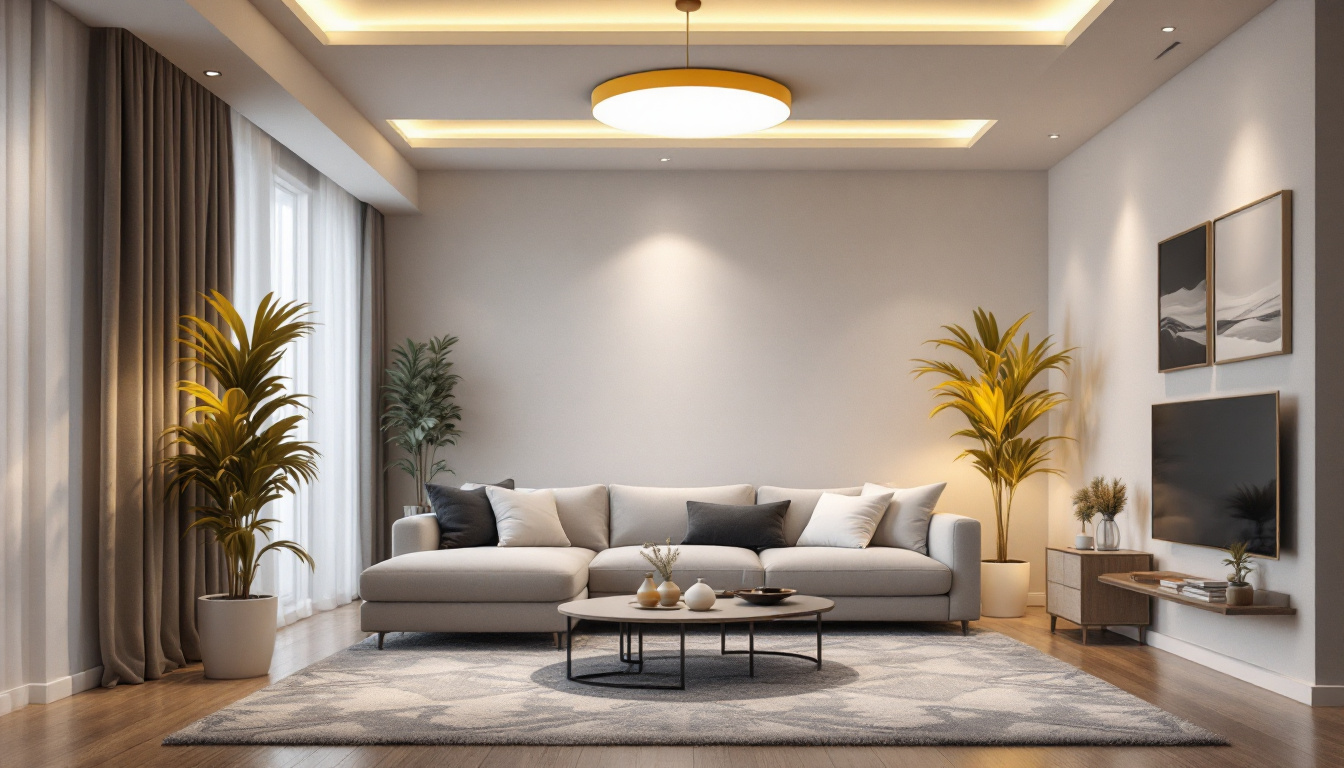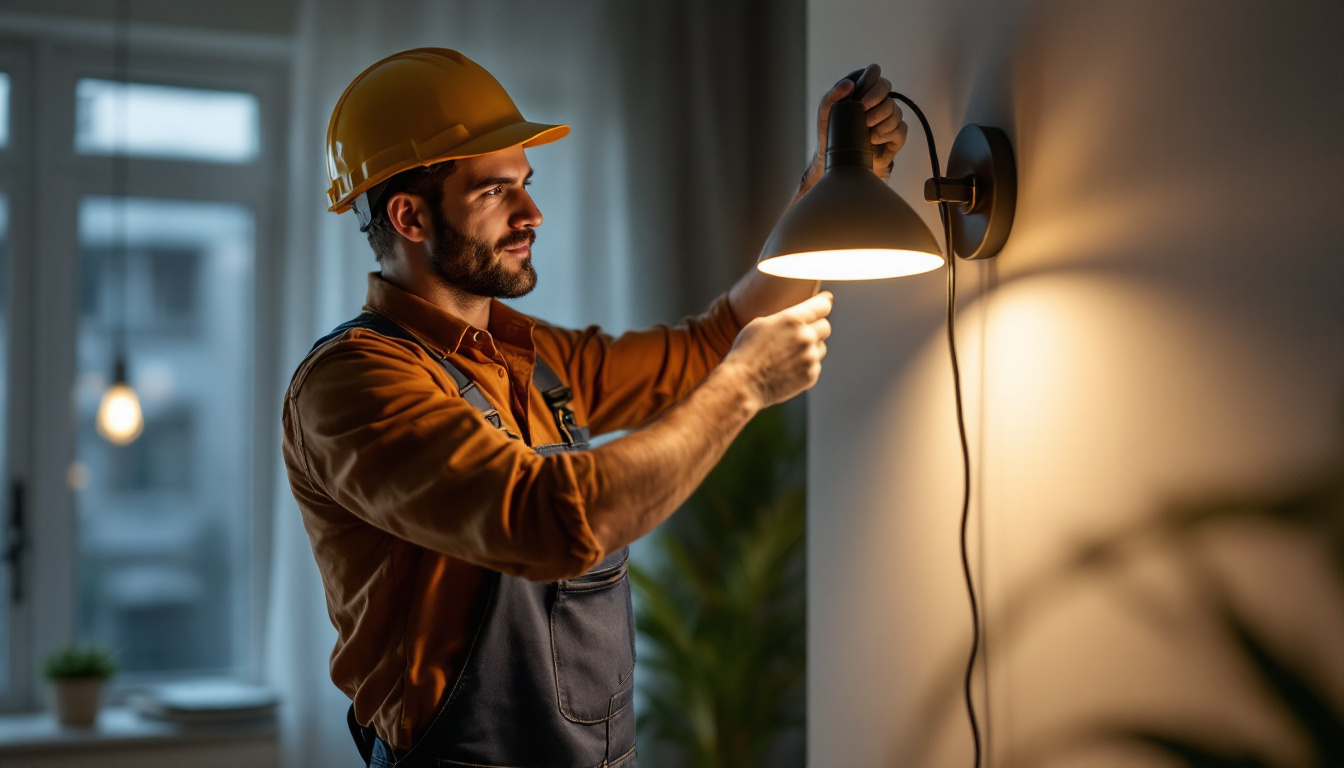

Recessed lighting has become a popular choice for both residential and commercial spaces, offering a sleek and modern aesthetic while providing effective illumination. However, one of the most critical components that often goes overlooked is the trim. Understanding recessed lighting trim is essential for lighting contractors aiming to deliver quality installations and meet client expectations. This article will delve into the various aspects of recessed lighting trim, including types, installation considerations, and best practices.
Recessed lighting trim refers to the visible part of the fixture that surrounds the light bulb and is installed in the ceiling. It plays a significant role not only in aesthetics but also in functionality. The trim can influence the direction of light, the overall ambiance of a space, and even the efficiency of the lighting system. Choosing the right trim can enhance the design of a room while also providing the necessary illumination for various activities.
There are several types of recessed lighting trim available, each designed for specific purposes and styles. Understanding these options can help lighting contractors make informed decisions based on client needs and preferences. The choice of trim can also affect the overall energy consumption of a lighting system, making it an important consideration for both residential and commercial projects.
Reflector trims are designed to maximize light output. They typically feature a shiny, reflective surface that directs more light into the room. This type of trim is ideal for areas requiring bright illumination, such as kitchens or workspaces. Additionally, reflector trims can be found in various finishes, including chrome and white, allowing them to blend seamlessly with different ceiling styles. The increased brightness they provide can also enhance safety in areas where visibility is crucial, such as hallways or staircases.
Adjustable trims allow for directional lighting, making them perfect for highlighting artwork or architectural features. They can be tilted or rotated, providing flexibility in lighting design. This versatility is particularly appealing to clients looking to create focal points in their spaces. Moreover, adjustable trims can be used to adapt to changing design preferences or seasonal decor, making them a smart investment for homeowners who enjoy updating their interiors. The ability to control the angle of the light can also help in reducing shadows, thereby creating a more inviting atmosphere.
Baffle trims are characterized by their ribbed interior, which helps to diffuse light and reduce glare. This type of trim is commonly used in living areas and bedrooms where softer lighting is desired. The design of baffle trims can also help to minimize light spillage, making them an excellent choice for ambient lighting. In addition to their practical benefits, baffle trims come in a variety of colors and finishes, allowing homeowners to select options that complement their decor. The soft, diffused light they produce can create a cozy and relaxing environment, making them ideal for spaces meant for rest and relaxation, such as home theaters or reading nooks.
Proper installation of recessed lighting trim is crucial for both safety and performance. Lighting contractors must be aware of various factors that can affect the installation process, ensuring a seamless experience for clients.
The type of ceiling and its height can significantly impact the choice and installation of recessed lighting trim. For instance, in lower ceilings, shallow trims may be more appropriate to avoid a cramped feeling. Conversely, higher ceilings may benefit from deeper trims that can accommodate larger bulbs and provide more extensive illumination. Additionally, the material of the ceiling, whether drywall, plaster, or a more decorative finish, can influence the installation technique. Contractors should also consider the room’s purpose; for example, a cozy living room may require softer lighting, while a kitchen may need brighter, more focused illumination.
Not all trims are compatible with every recessed lighting fixture. It is essential to verify that the trim selected matches the housing unit in terms of size and design. Lighting contractors should always check the manufacturer’s specifications to ensure proper fit and performance. Furthermore, the aesthetic appeal of the trim should not be overlooked. Different styles, such as baffle, reflector, or adjustable trims, can dramatically alter the ambiance of a space. Contractors should also consider the finish of the trim—whether matte, glossy, or metallic—as this can affect how light is reflected in the room and contribute to the overall design theme.
Electrical compatibility is another critical factor. Contractors must ensure that the trim can handle the wattage of the bulbs being used. Additionally, considerations for dimmable options and smart lighting systems should be taken into account, as these can influence the choice of trim and installation methods. It’s also important to assess the existing wiring and circuit load to prevent any potential overloads. Contractors may need to recommend upgrades or modifications to the electrical system if the current setup does not meet the requirements for the new lighting. Moreover, the integration of energy-efficient LED options can not only reduce energy consumption but also extend the lifespan of the fixtures, making it a wise choice for both contractors and clients alike.
Different spaces require different lighting solutions. Understanding how to choose the right trim based on the application can help contractors deliver optimal results.
In residential settings, the choice of trim often depends on the room’s function and desired ambiance. For example, in living rooms, baffle trims can create a warm, inviting atmosphere, while reflector trims may be more suitable for kitchens where bright lighting is essential. Additionally, in bedrooms, using adjustable trims can allow homeowners to control the light intensity, creating a cozy environment for relaxation or a brighter setting for reading. The finish of the trim can also play a significant role; matte finishes can help diffuse light softly, while shiny finishes can enhance brightness and create a more modern aesthetic.
In commercial environments, the focus may shift towards functionality and energy efficiency. Adjustable trims can be beneficial in retail spaces to highlight products, while reflector trims can provide the necessary brightness in office settings. Understanding the specific needs of the business can guide contractors in making the right trim choices. For instance, in restaurants, warm-toned trims can enhance the dining experience by creating an inviting atmosphere, while in warehouses, robust trims that provide high lumen output are essential for safety and productivity. Moreover, integrating smart lighting solutions with compatible trims can further enhance energy savings and operational efficiency, making it a worthwhile consideration for modern commercial spaces.
For outdoor recessed lighting, weather-resistant trims are a must. These trims are designed to withstand the elements while providing adequate illumination for outdoor spaces. Contractors should ensure that the selected trim is rated for outdoor use to avoid issues related to moisture and temperature fluctuations. Furthermore, the choice of trim can also affect the aesthetic appeal of outdoor areas; decorative trims can complement landscaping features and architectural elements, creating a cohesive look. In addition, utilizing trims that accommodate LED bulbs can enhance energy efficiency, making outdoor lighting not only functional but also environmentally friendly. Special attention should also be given to the beam angle of the trims, as this can influence how light is distributed across patios, walkways, or garden areas, ensuring safety and enhancing the outdoor experience.
As design trends evolve, so do the options available for recessed lighting trim. Staying informed about current trends can help contractors offer innovative solutions to their clients.
Minimalism continues to be a dominant trend in interior design, and recessed lighting trim is no exception. Sleek, low-profile trims that blend seamlessly with ceilings are increasingly popular. These designs not only enhance the aesthetic appeal but also provide a clean, unobtrusive look.
With the rise of smart home technology, recessed lighting trims that support smart bulbs and integrated controls are becoming more sought after. This trend allows homeowners to customize their lighting experience, adjusting brightness and color temperature with ease. Contractors should familiarize themselves with compatible trims to meet this growing demand.
As sustainability becomes a priority for many homeowners and businesses, energy-efficient trims are gaining traction. LED-compatible trims that maximize light output while minimizing energy consumption are particularly appealing. Contractors should emphasize the long-term cost savings and environmental benefits of choosing energy-efficient options.
Proper maintenance of recessed lighting trim can extend its lifespan and ensure optimal performance. Lighting contractors should educate clients on how to care for their fixtures effectively.
Dust and debris can accumulate on recessed lighting trim, affecting both appearance and light output. Regular cleaning with a soft, damp cloth can help maintain the trim’s finish and ensure consistent illumination. Contractors can recommend appropriate cleaning products that won’t damage the trim’s surface.
Periodically inspecting recessed lighting trim for signs of damage is essential. Cracks, discoloration, or loose fittings can indicate underlying issues that may require attention. Contractors should advise clients on what to look for and when to seek professional assistance.
As lighting technology continues to advance, upgrading trims may be a viable option for clients looking to enhance their lighting systems. Contractors can discuss the benefits of newer trims, such as improved energy efficiency or updated designs, and help clients make informed decisions about potential upgrades.
Recessed lighting trim is a fundamental aspect of any lighting installation, influencing both aesthetics and functionality. For lighting contractors, understanding the various types of trim, installation considerations, and current trends is essential for delivering high-quality services. By staying informed and educating clients on the importance of trim selection and maintenance, contractors can ensure successful installations that meet the diverse needs of their clientele.
As the demand for recessed lighting continues to grow, so does the opportunity for contractors to differentiate themselves by providing expert knowledge and tailored solutions. By mastering the intricacies of recessed lighting trim, lighting contractors can enhance their reputation and drive success in an increasingly competitive market.
Ready to elevate your lighting installations with the finest recessed lighting trims? Look no further than LumenWholesale for an unbeatable selection of spec-grade lighting products at wholesale prices. Say goodbye to middleman markups and hello to top-quality, reliable lighting solutions that fit your project’s needs. With free shipping on bulk orders, LumenWholesale is your go-to source for premium lighting without the premium price tag. Discover the ideal combination of quality, value, and convenience today. Visit LumenWholesale and secure the best value in wholesale lighting for your next project.

Discover how T Type Lamps are revolutionizing the lighting industry, offering contractors a competitive edge with their energy efficiency, versatility, and cutting-edge technology.

Discover the key differences between fluorescent and LED lighting in this insightful article.

Discover the essential resources lighting contractors rely on to master the art of light switch installation and design.

Discover essential tips and strategies for lighting contractors to effectively troubleshoot and prevent common issues with sensor lights.
Get notified when NEW deals are released.
Optimize your budget with wholesale discounts.
Only top-quality, specification-grade lighting products.
No additional costs at checkout - what you see is what you pay.
We understand the unique needs of contractors.